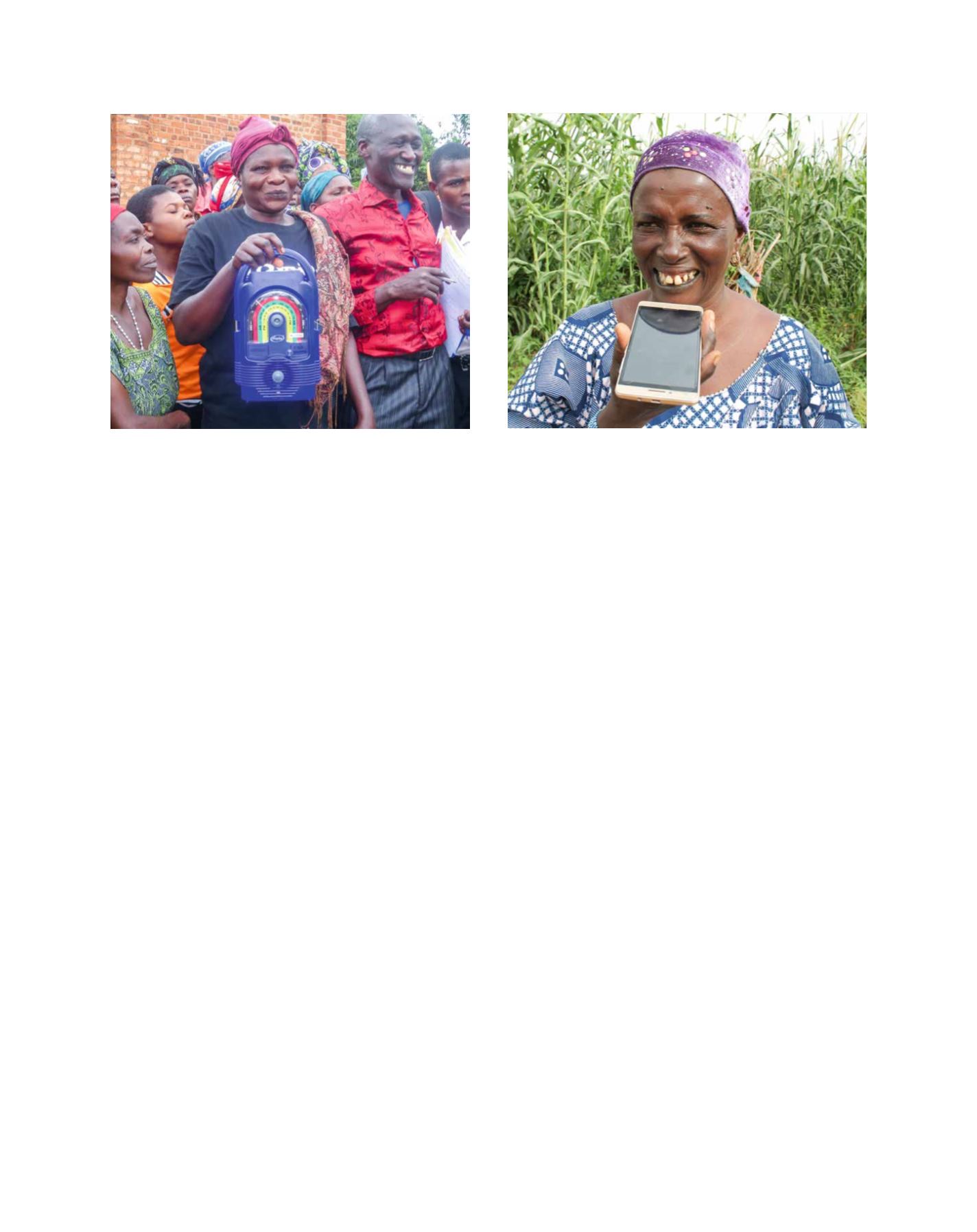

[
] 48
ICTs are enablers for social inclusion and improved dialogue
but they are not a development objective in themselves. By
making use of ICTs in support of transformative processes,
the Dimitra Clubs ensure better inclusive participation and
ownership, and thus sustainability.
Today, there are 45,000 members (two thirds being women) in
the 1,500 existing Dimitra Clubs in five countries of sub-Saharan
Africa (Burundi, Democratic Republic of Congo, Ghana, Niger
and Senegal). It is estimated that about 270,000 people benefit
directly from the activities carried out by the clubs and that over
1 million people’s lives have improved through them. Impact has
been achieved in a variety of areas such as nutrition, agricultural
production, resilience, climate change adaptation, marketing,
women’s leadership, gender equality, education, social cohesion
and community governance.
The dynamic nature of this approach has stimulated changes
in gender roles and behaviours at individual, household and
community levels. In most villages women now speak up in
public, something that was unacceptable before the clubs were
created. Violence against women at the household and commu-
nity levels has notably decreased. In the village of Gasseda
(Niger), there is less tension among the villagers and the increas-
ing number of girls going to school has led to a decrease in early
and forced marriages. The clubs have also been instrumental for
breaking down food taboos that prevented women from taking
an adequate food intake. Thanks to a series of awareness-rais-
ing activities conducted by the Dimitra Clubs, in the village of
Yalosuna (Democratic Republic of Congo) the women are now
allowed to eat catfish and other previously forbidden foods,
which adds a new and valuable source of protein to their diets.
As active members of the clubs, women increasingly gain self-
confidence and often become leaders and entrepreneurs of their
communities. In the village of Yanongé (Democratic Republic of
Congo), women members of the clubs have become leaders of
producers’ organizations and participate in the decision-making
processes at the community level. In Busunu (Ghana), one year
after one club had been created, discussions around bread produc-
tion resulted in the kick-off of a business activity led by the women
of the club. “We now have our own money, and this has given us
more power with our husbands and within our families! We have
developed leadership skills!” said Saasi Fati, treasurer of the club.
Many stories from the field
10
show the success of this
approach in using participatory communication and ICT appli-
cations as enablers for collective action. In the village of Mallam
Koïra (Niger), a woman leader of a Dimitra Club noticed that
some insects were damaging the millet fields. After discussions,
her club decided to take action by taking a picture with the club
facilitator’s mobile phone and send it to the agricultural inspec-
tor of the region who was able to promptly advise on actions to
stop the infestation. Three days after, the agricultural inspector
sent the pest control agents who had already seen the picture
and were able to provide the adequate treatment on time. In
the village of Falwel (Niger), the youth’s Dimitra Clubs have
created a network through the WhatsApp application. For the
first time, isolated rural communities communicate with the
world to share the clubs’ achievements through photos, videos,
texts and voice messages. This has been a source of motivation
for young rural people who feel they count and that they can
contribute to improve their environment.
These stories show how participatory approaches making
inclusive use of ICTs not only help build people’s resilience
capacities to mitigate risks, but also stimulate social inclusion
of vulnerable and marginalized groups in rural areas, such as
women and youth, and contribute to gender equality.
In line with the principle of ‘leaving no one behind’ from
Agenda 2030, the approach of the Dimitra Clubs is a new
social model of individual and collective empowerment and
engagement that is emerging with the use of improved commu-
nication. Efforts are currently being made to maximize the
number of rural women and men targeted, notably by introduc-
ing better up-to-date digital technologies, such as smart phones
and tablets, and in establishing partnerships with the private
sector to improve connectivity and implement simple solutions
for rural areas such as whitespaces for rural Wi-Fi.
The Dimitra Clubs combine capacity development processes with the use of
ICTs such as solar-powered radio sets and mobile phones
Isolated rural communities can communicate with the world to share the
clubs’ achievements through photos, videos, texts and voice messages
Image: The Democratic Republic of the Congo, Christiane Monsieur
Image: Niger, Ali Abdoulaye
A B
etter
W
orld
















